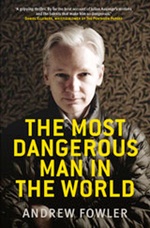![]() There aren’t many places in the world where you can openly accuse the nation’s top police and intelligence agencies of having an attitude problem, as I did on Monday, without being visited by the men in the van with the canvas sack. Which is a good thing.
There aren’t many places in the world where you can openly accuse the nation’s top police and intelligence agencies of having an attitude problem, as I did on Monday, without being visited by the men in the van with the canvas sack. Which is a good thing.
In this week’s Patch Monday podcast, embedded immediately below for your convenience and CBS Interactive’s traffic logging, I departed from the usual format to present a personal opinion.
Data retention for law enforcement is one of the most important political issues relating to our use of the internet now and as far into the future as we care to imagine, I said, and it’s being mishandled.
The Australian government’s current one-page working definition (PDF) of what constitutes communications metadata (which can be requested by law enforcement agencies without a warrant) as opposed to communications content (which generally does require a warrant) is, to anyone with a technical understanding of how the internet actually works and is evolving, virtual gibberish.
“Dangerously immature” is how I described it.
I also raised three points where I think the version of reality being promoted by the Australian Federal Police (AFP) and the Australian Security and Intelligence Organisation (ASIO) is wrong.
- This is a push for more power. We conduct so much more of our lives online than we ever did on the phone, and that means the balance of power is changing. We need to have a conversation about this.
- The AFP says quite specifically that they’re not after our web browsing activity, but I don’t see how the working document supports that argument. And other agencies, including the Australian Securities and Investment Commission (ASIC), are after that stuff.
- ASIO and the AFP constantly talk about the powers being needed to catch the terrorists and pedophiles. But the law will probably be modelled on the current law for the phone, which provides access to communication metadata to many other agencies with far less stringent accountability rules for many other, far less serious, crimes.
Please have a listen and tell me what you think.
Podcast: Play in new window | Download (Duration: 37:06 — 21.5MB)
The podcast stands on its own, but I want to emphasise the thing that still disturbs me…
Continue reading “Insulted, ASIO? That’s not really the problem, surely?”


